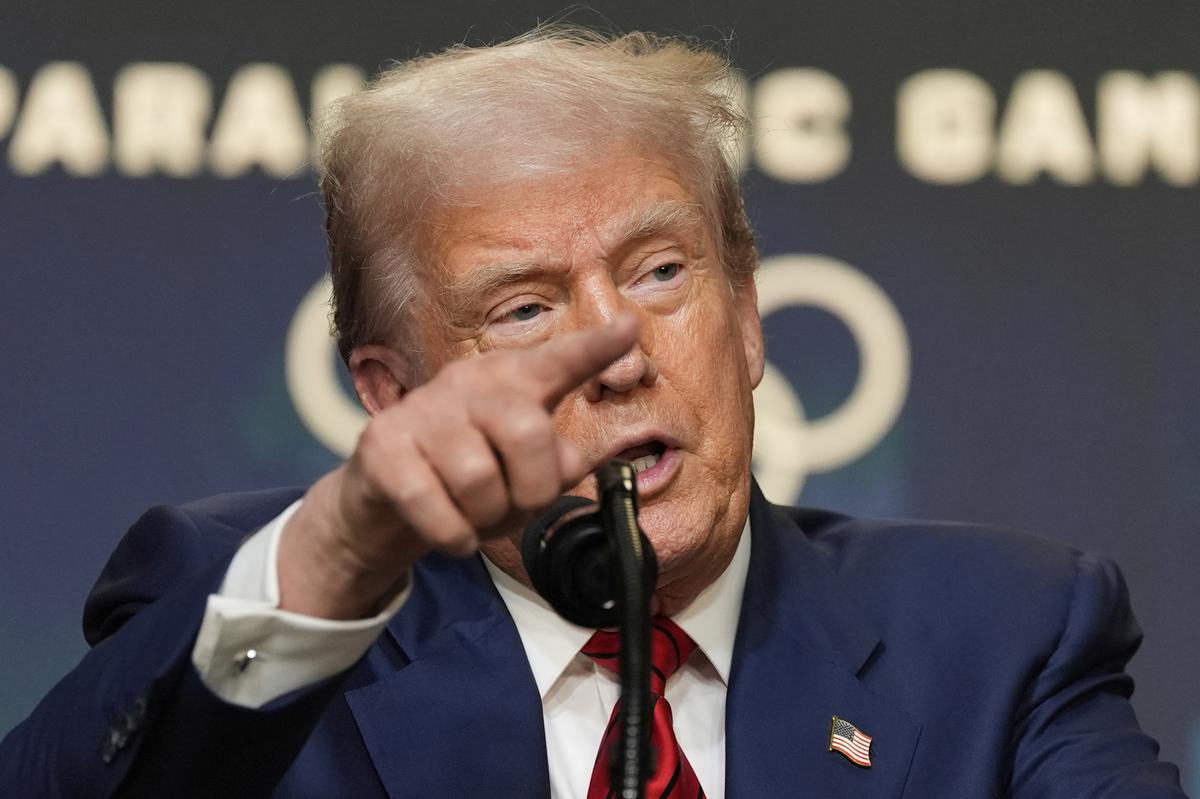
U.S. President Donald Trump answers questions from reporters on August 5, 2025, in Washington.
| Photo Credit:
AP
U.S. President Donald Trump on Wednesday (August 6, 2025) signed an executive order imposing an additional 25% tariff on imports from India, in response to India “directly or indirectly” importing oil from Russia. This is over and above the 25% tariff on Indian imports that Mr. Trump approved on July 31.
While the initial 25% tariff will come into effect from Thursday (August 7, 2025), the additional 25% tariff will come into effect after 21 days.

The Ministry of External Affairs (MEA) responded to these latest developments, saying it has made its stand clear — through an earlier statement following Mr. Trump’s threat of additional tariffs — that these actions were “unfair, unjustified and unreasonable”. It was “extremely unfortunate” that the U.S. has chosen this course of action, the MEA said.
DATA | Donald Trump’s criticism of India for its oil and arms trade with Russia is factual but illogical
‘Penalty’ for Russian oil imports
“To deal with the national emergency described in Executive Order 14066 [relating to Russia’s actions in Ukraine], I determine that it is necessary and appropriate to impose an additional ad valorem duty on imports of articles of India, which is directly or indirectly importing Russian Federation oil,” Mr. Trump’s executive order said.
“Accordingly, and as consistent with applicable law, articles of India imported into the customs territory of the United States shall be subject to an additional ad valorem rate of duty of 25%,” it added.
Over the last few days, Mr. Trump has repeatedly threatened additional tariffs on India as a “penalty” for its oil imports from Russia.
Also Read | I never said a percentage: Trump on increasing tariffs on countries buying Russian energy
‘Unfair, unjustified, unreasonable’
In response to one such threat, the MEA on August 4 pointed out that, not only did the U.S. encourage such trade previously, both the European Union and the U.S. actively trade other items with Russia in excess of the amount that India pays for Russian oil.
“We have already made clear our position on these issues, including the fact that our imports are based on market factors and done with the overall objective of ensuring the energy security of 1.4 billion people of India,” the MEA statement said. “It is therefore extremely unfortunate that the U.S. should choose to impose additional tariffs on India for actions that several other countries are also taking in their own national interest.”
“We reiterate that these actions are unfair, unjustified and unreasonable,” the MEA added. “India will take all actions necessary to protect its national interests.”
Trump’s 25% tariffs: Would India be better off without a rushed trade deal?
‘Competitive disadvantage’
This latest escalation by Mr. Trump is a “severe setback” for Indian exports, said S.C. Ralhan, president of the Federation of Indian Export Organisations, noting that nearly 55% of Indian exports to the U.S. market will be directly affected.
“The 50% reciprocal tariff effectively imposes a cost burden, placing our exporters at a 30% to 35% competitive disadvantage compared to peers from countries with a lower reciprocal tariff,” Mr. Ralhan added.
Negotiators from the U.S. and India are currently engaged in finalising the first tranche of a Bilateral Trade Agreement (BTA) by fall of this year. The next physical meeting between the two sides is expected to start on August 25 in New Delhi.
‘Talks hampered by threats’
“India should remain calm, avoid retaliation for at least six months, and recognise that meaningful trade negotiations with the U.S. cannot proceed under threats or mistrust,” said Ajay Srivastava, founder of the Global Trade Research Initiative and a former Director General of Foreign Trade.
He added that India could consider stopping its purchases of Russian oil only if it was economically viable, and not under duress from Washington.
Published – August 06, 2025 07:46 pm IST



